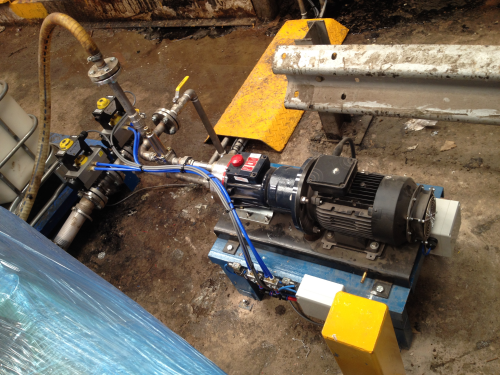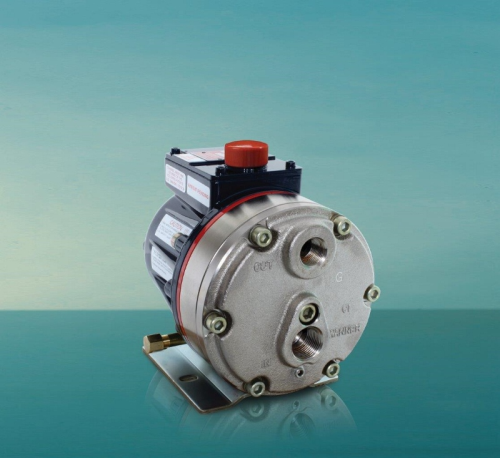

The Model G25 Hydra-Cell diaphragm pump.
The basic definition of emulsions, ‘a mixture of two or more liquids that are normally unblendable,’ hints at the difficulties that exist in producing and handling them. There are many types of emulsions which occur naturally or have been successfully developed, ranging from milk to cutting fluids and also latex.
Described as a complex but stable emulsion consisting of micro-particles contained in an aqueous medium, latex presents two basic challenges to the pumping process. Firstly, latex emulsions are extremely shear-sensitive and require pumps that can reliably deliver a low shear rate. Secondly, any contact with air will further polymerise the latex, so it is imperative that the pump is a sealless design.
Potential pitfalls A recent example of the importance of understanding the challenges of pumping latex and specifying the most suitable type of pump for them is at Bituchem Building Products. Part of the Bituchem Group of companies based in Gloucestershire, UK, the company’s building division manufactures a range of products which help to protect and increase the longevity of highway surfaces.
To enhance both the quality and consistency of its products, the firm has a process whereby latex is pumped into the bitumen lines with the latex metered in proportion to the bitumen flow. As a result, it was important for Bituchem to understand the potential pitfalls and to specify the most suitable type of pump from the beginning.
Bituchem approached UK pump specialists Michael Smith Engineers with details of what is a very specific application along with design of the process involved.
The requirement was to pump between two and 20 litre/minute of a latex solution with a viscosity of around 600 cP at 10 bar discharge pressure. The capacity was to be adjusted using an inverter and the pump speed altered in proportion to the flow through the bitumen pipeline.
The Wanner Hydra-Cell G25, sealless, positive displacement high-pressure diaphragm pump in operation at Bituchem Building Products.
After considering various options, Bituchem invested in a Wanner Hydra-Cell G25, sealless, positive displacement high-pressure diaphragm pump. The pump, whichfeaturesa stainless steel wet end and operates between 70 and 650 rpm, was installed around a year ago and has worked well on the latex pumping application ever since.
“We were aware of the problems involved when pumping latex and thanks to Michael Smith Engineers understanding of our requirements and recommending the most suitable type and model of pump, it is working perfectly,” saidJohn Shirley, engineering manager at Bituchem.
“We have not had any issues from day one. The pump saves us time as we now add the latex as part of the overall process and we also appreciate how the pump operates with the combination of low speeds and medium to high pressures.”
Choosing the right pump has saved Bituchem time as well as helping enhance product quality and improving consistency. Positive displacement diaphragm pump technology does not have the disadvantages of other designs of pump when handling emulsions, such as latex.
The sealless, leak-free configuration ensures total product containment while the design of the wetted path reduces internal friction enabling the pump to deliver the level of shear-sensitive operation that is so important when working with latex. The pump’s positive displacement operating principle also guarantees the product flow rate will remain volumetrically consistent.
The Hydra-Cell range covers flow rates of up to 140 litre /minute at maximum discharge pressures of between 70 and 170 Bar, depending on the model. The absence of seals, cups or packing eliminates the issues associated with seal failure and so lowers maintenance costs. Hydra-Cell pumps can also be run dry without damage.
They are available in a wide choice of liquid end materials ensuring versatility in their ability to handle the most ‘challenging fluids’ along with the flexibility to be adapted to a wide range of pumping duties with applications including metering, dosing, injecting and spraying chemicals, solvents, acids, hydrocarbons, natural gas liquids, alkalis, polymers, aqueous ammonia, resins, slurries, recycled or dirty liquids.






